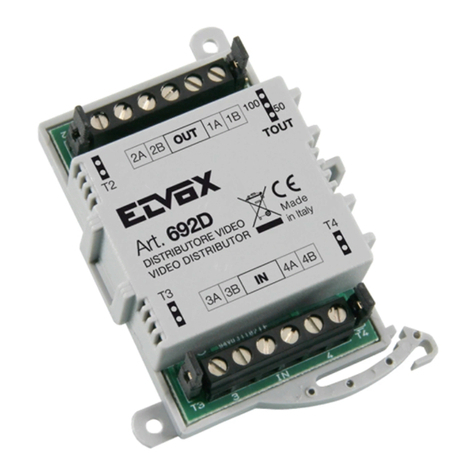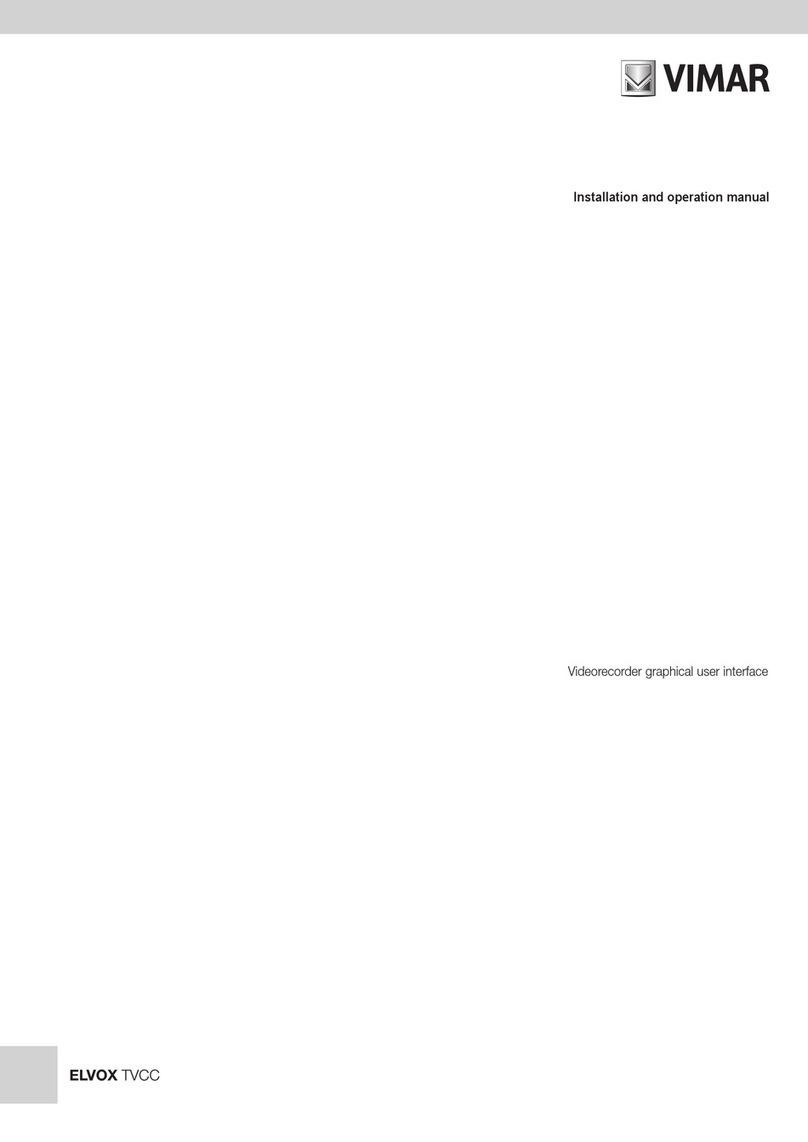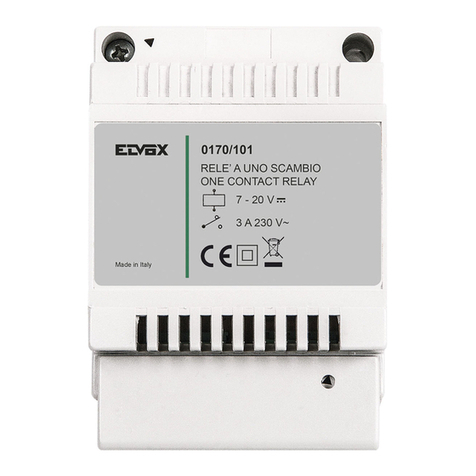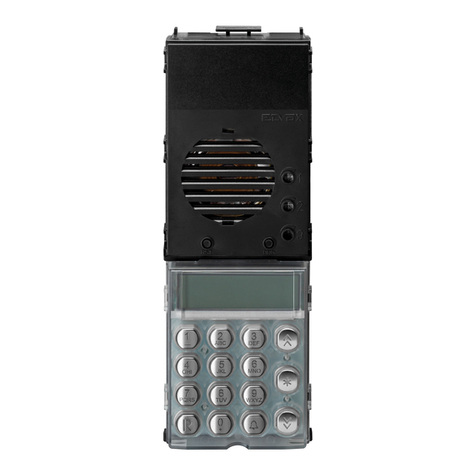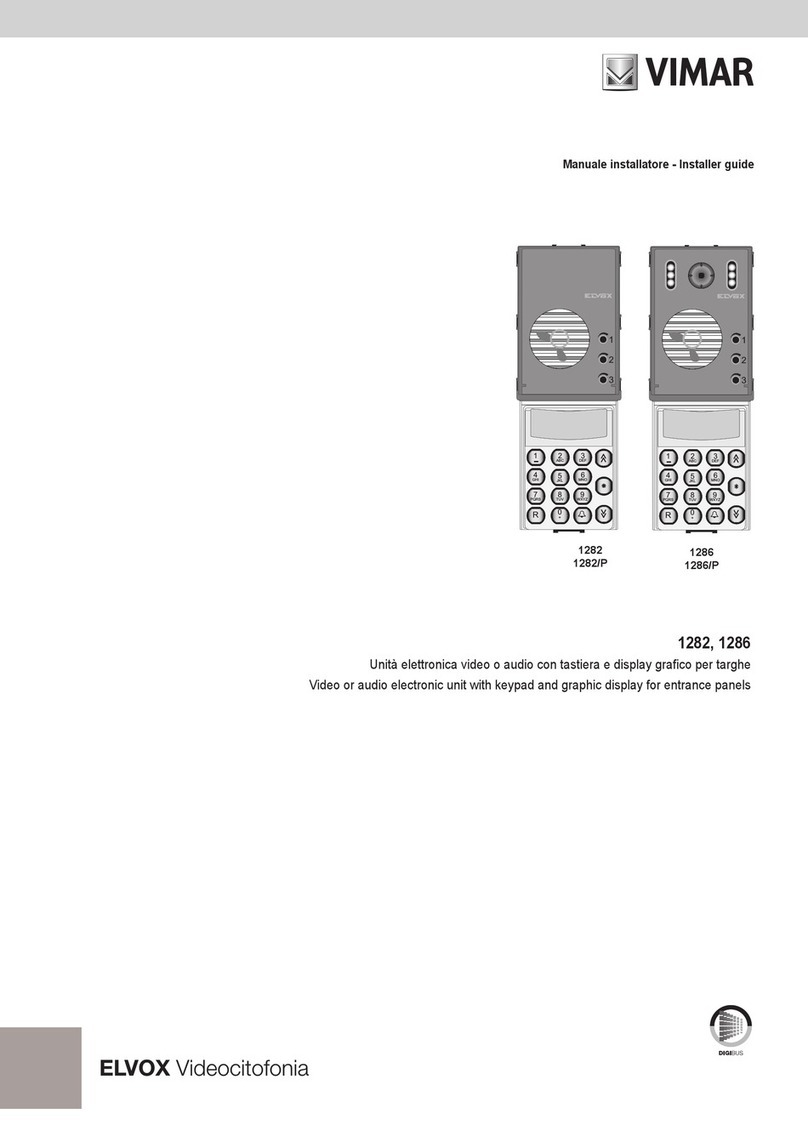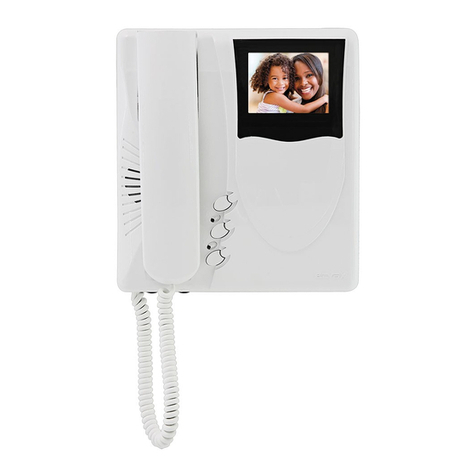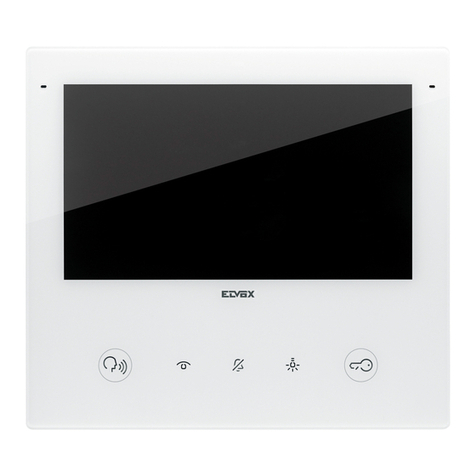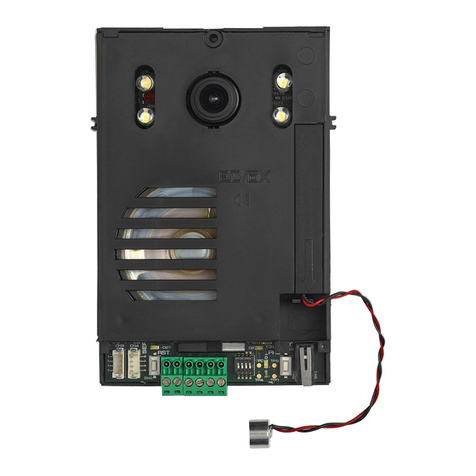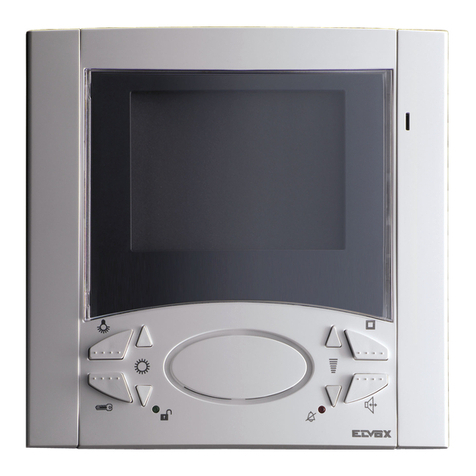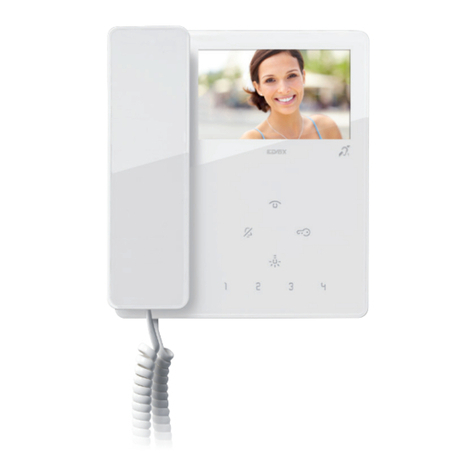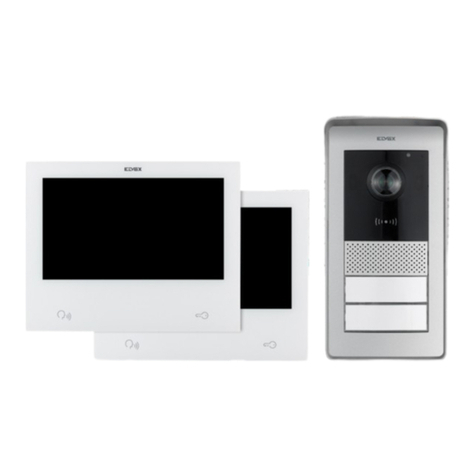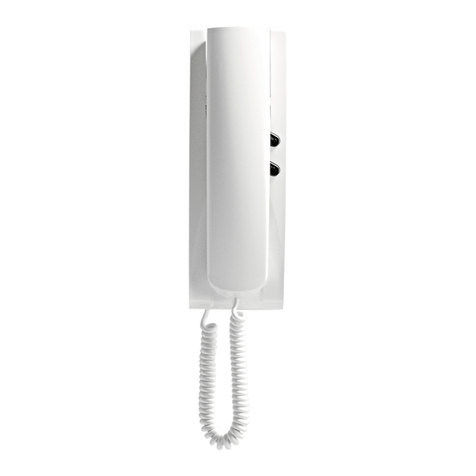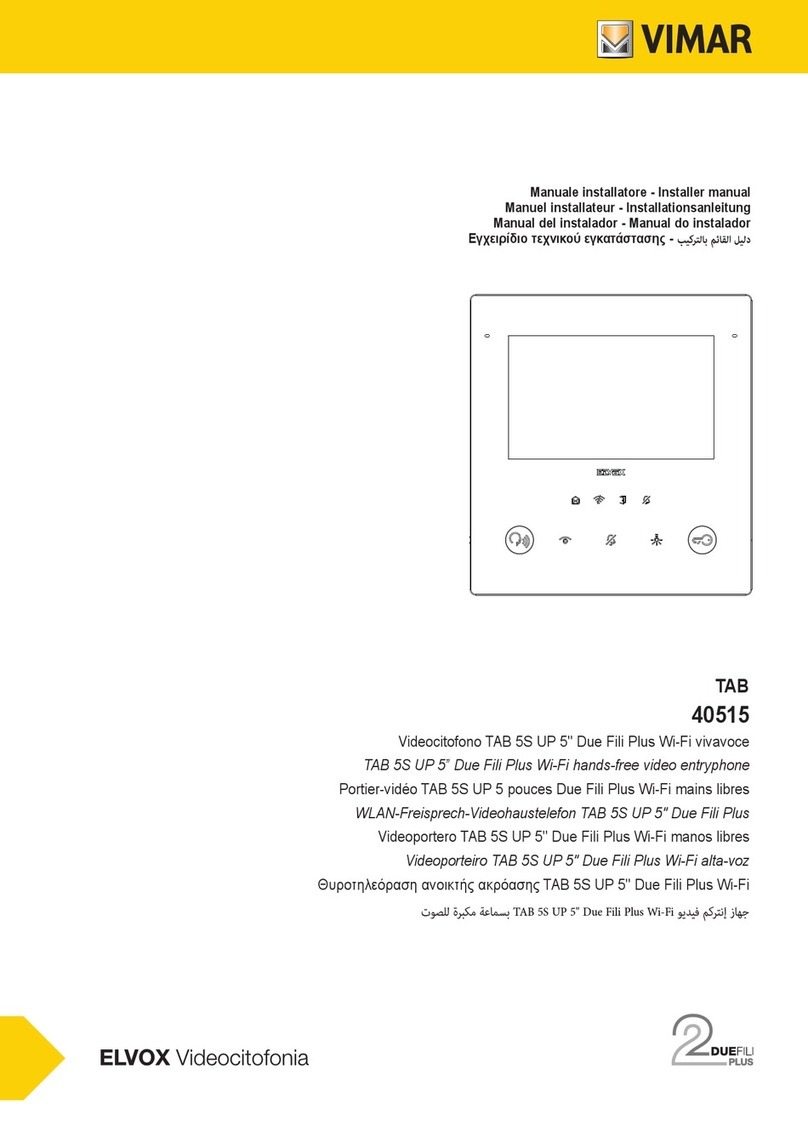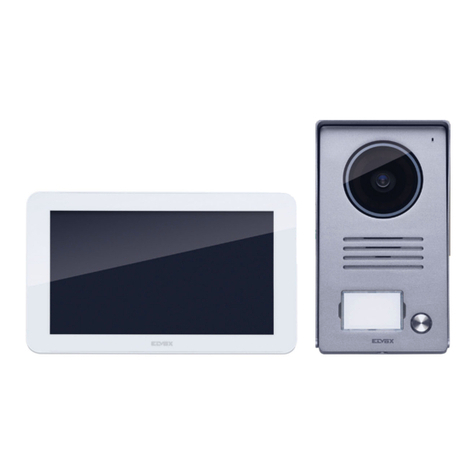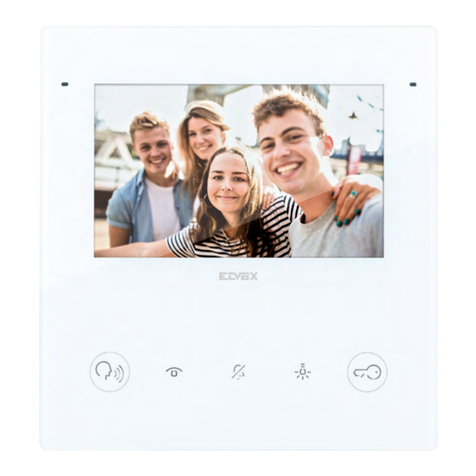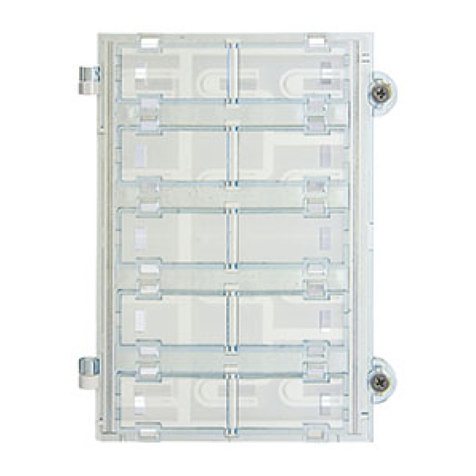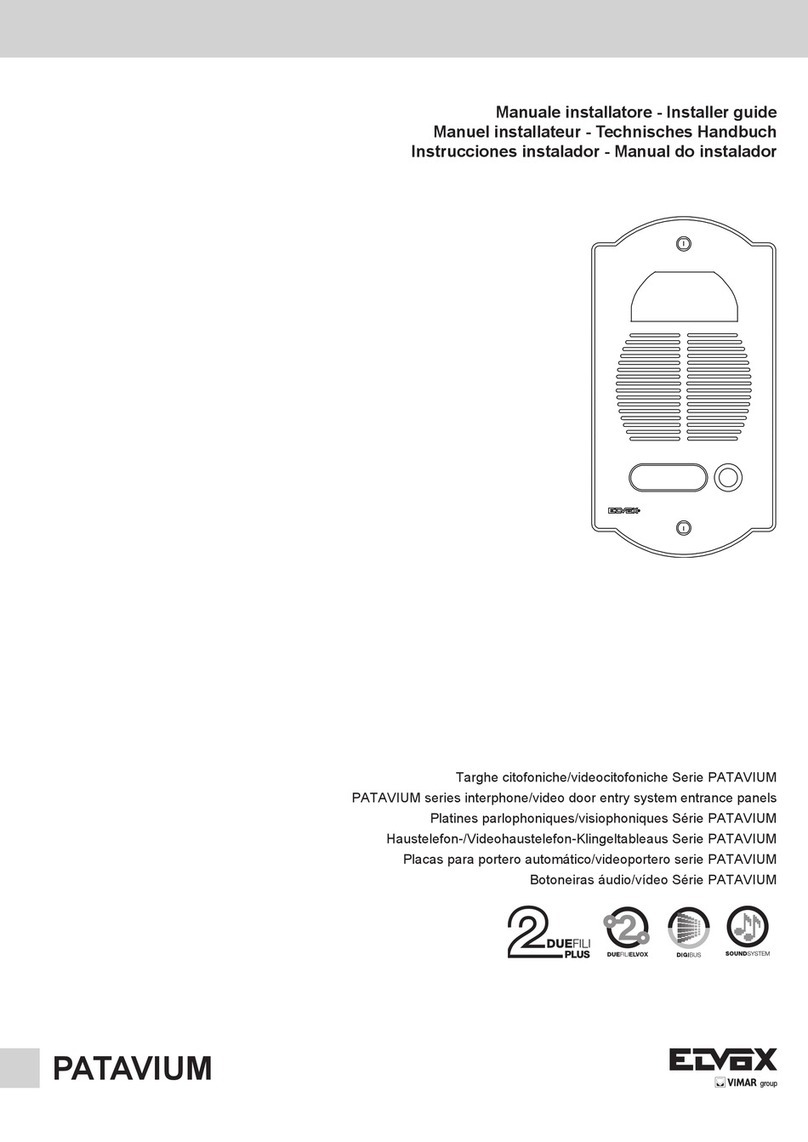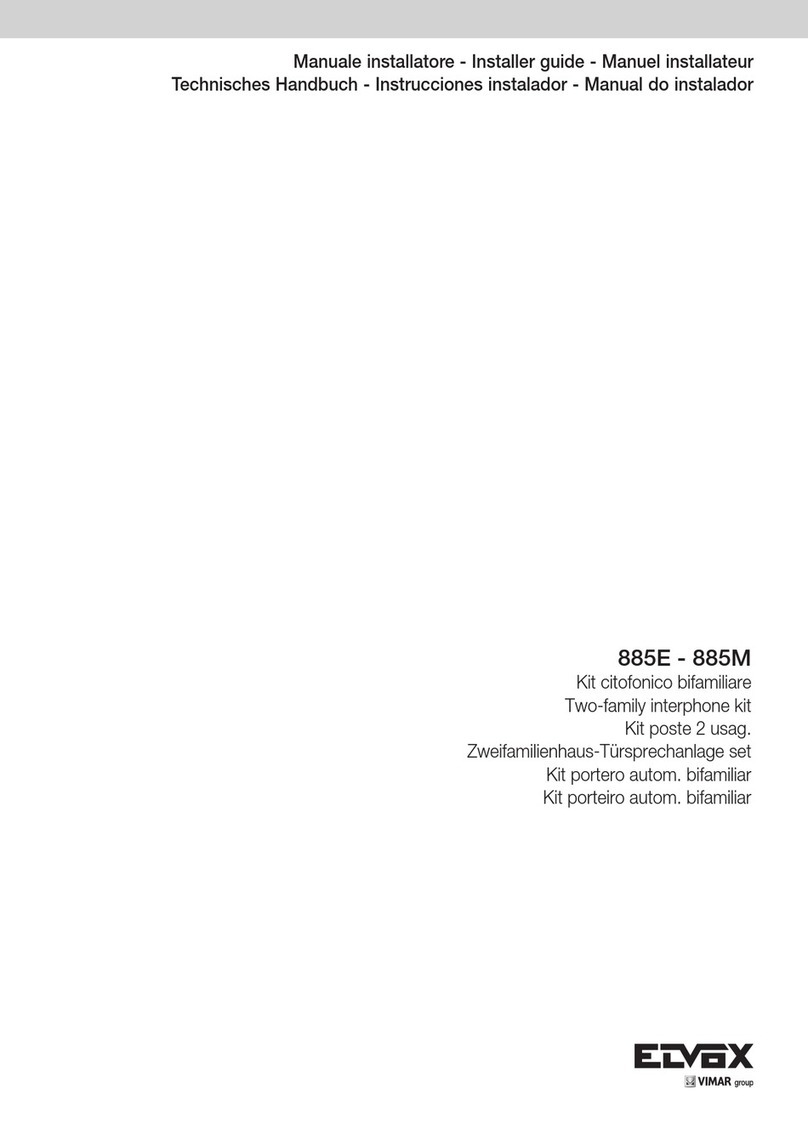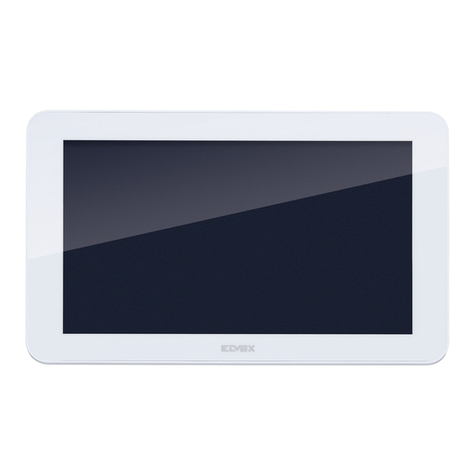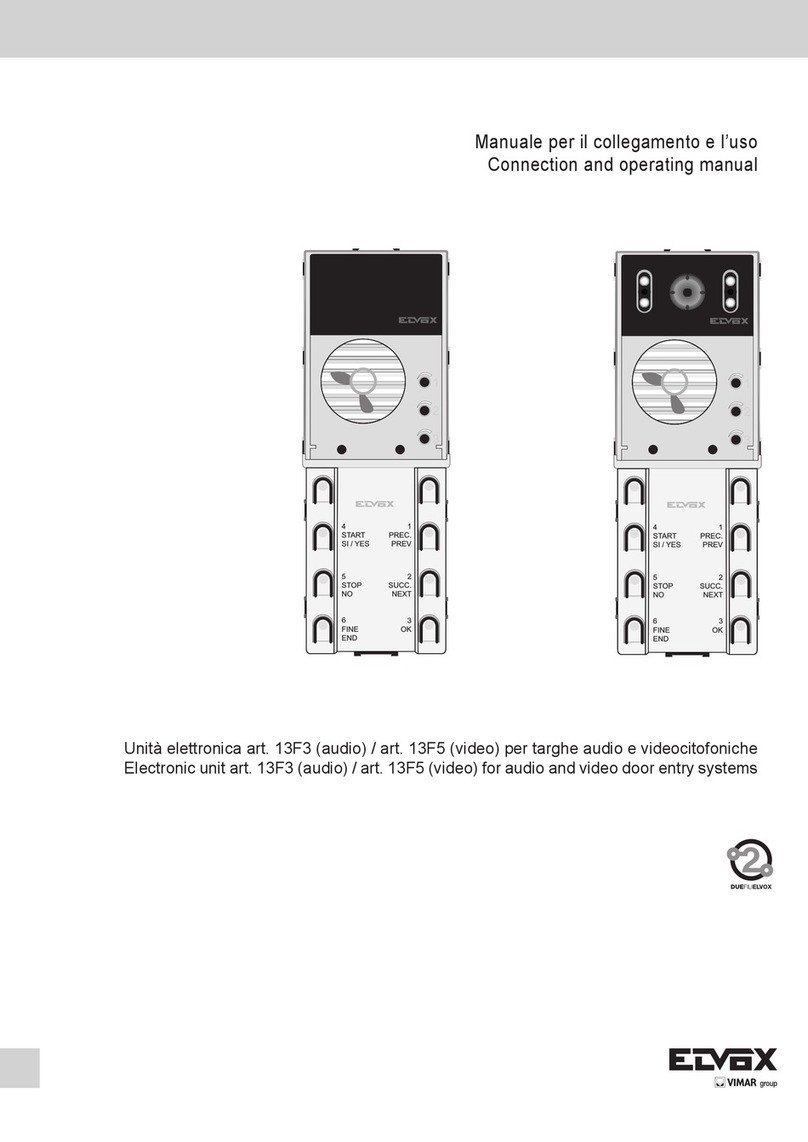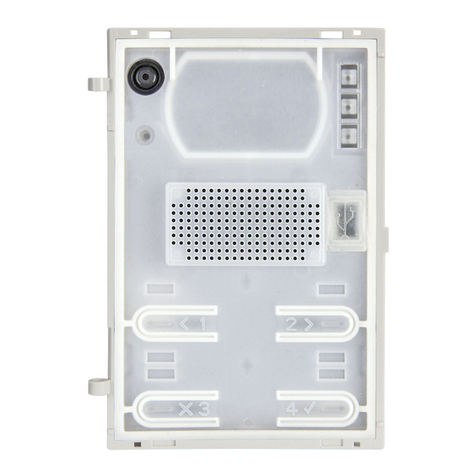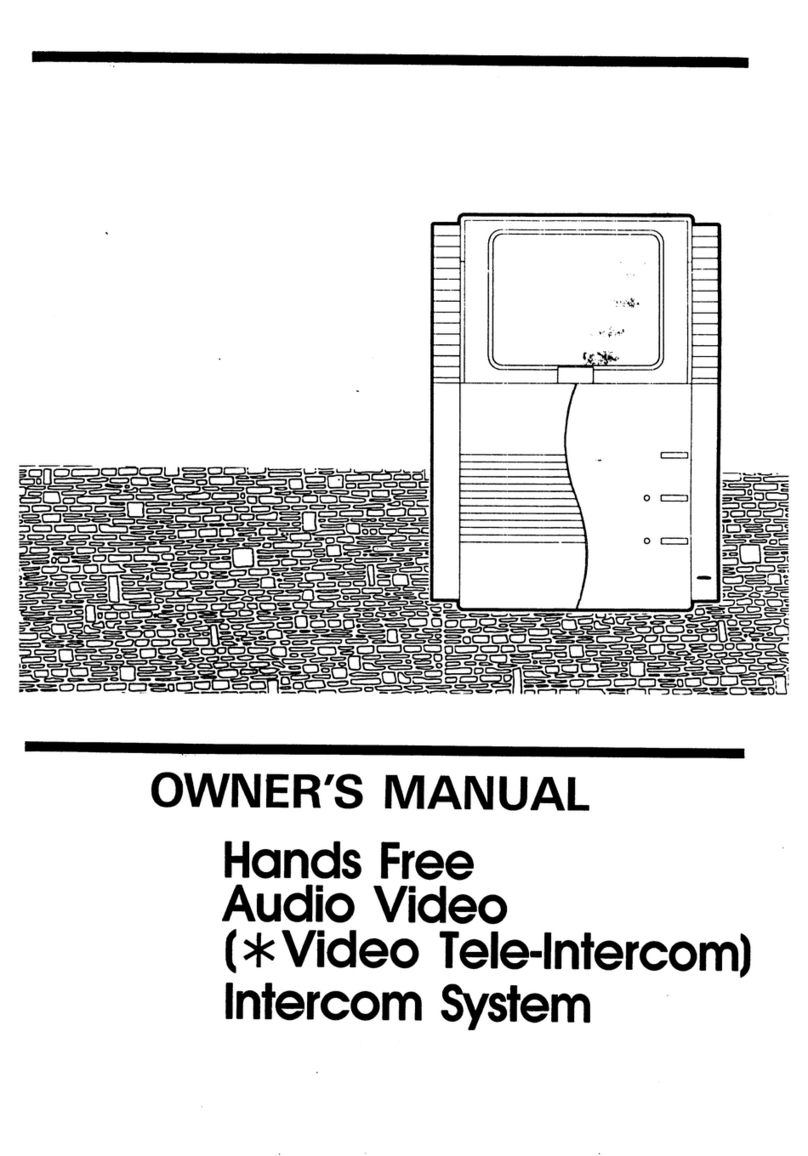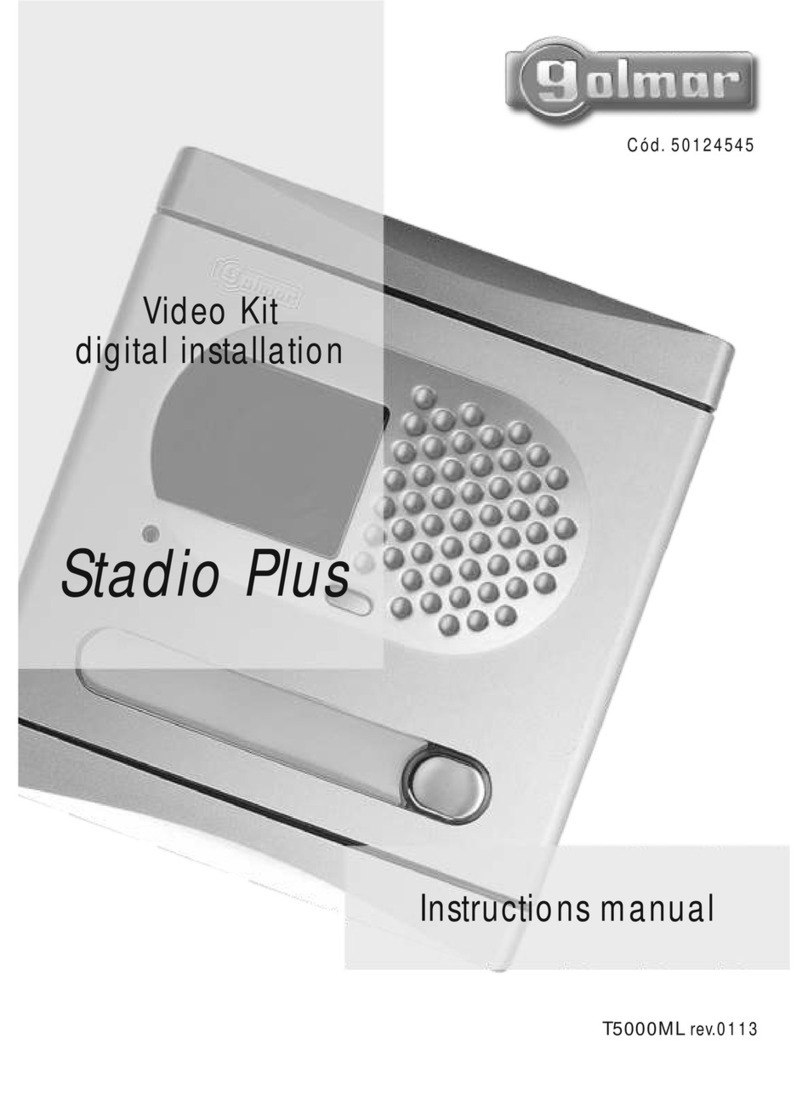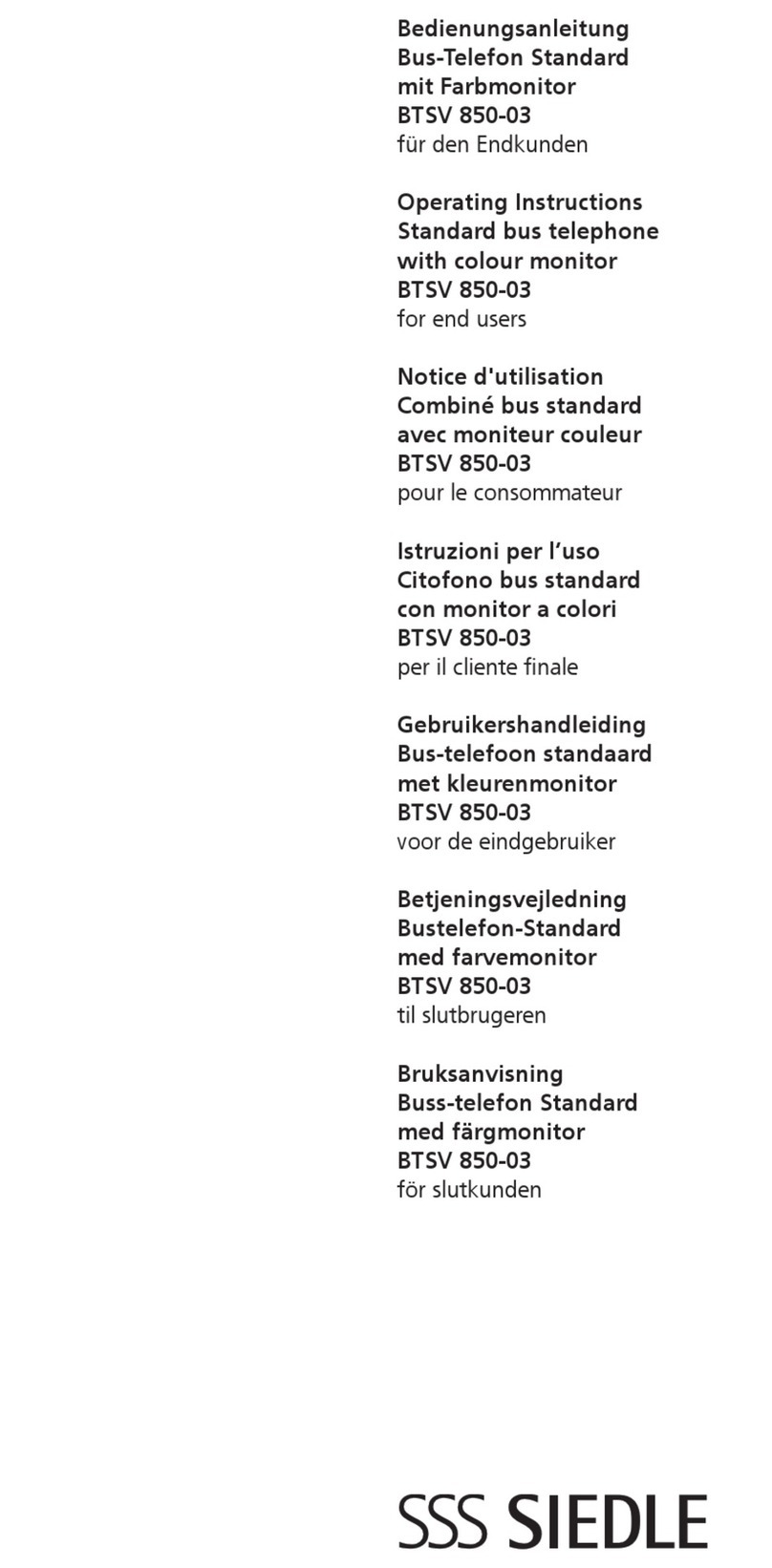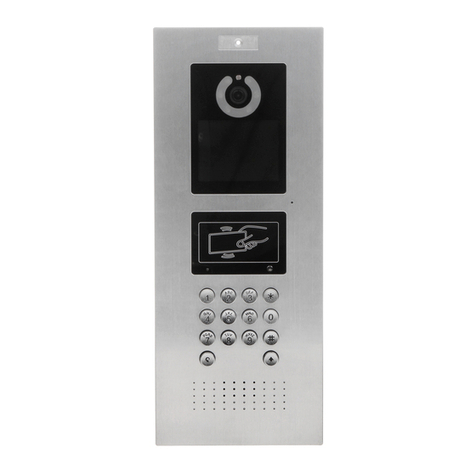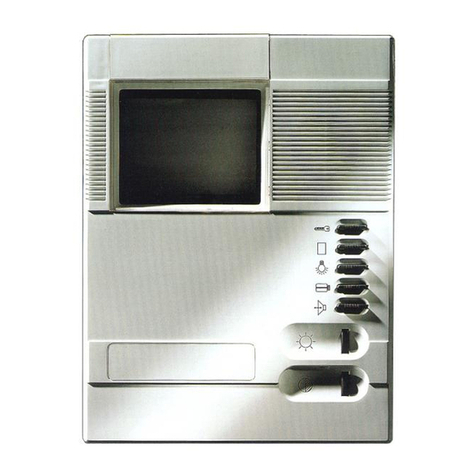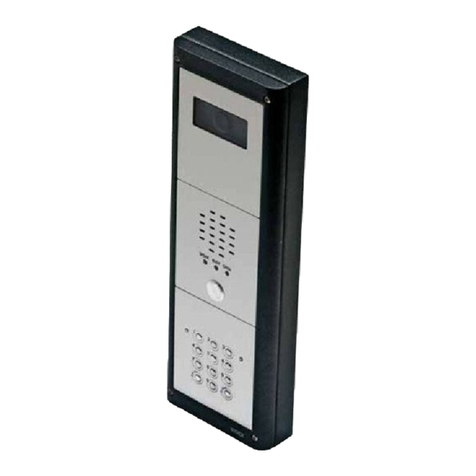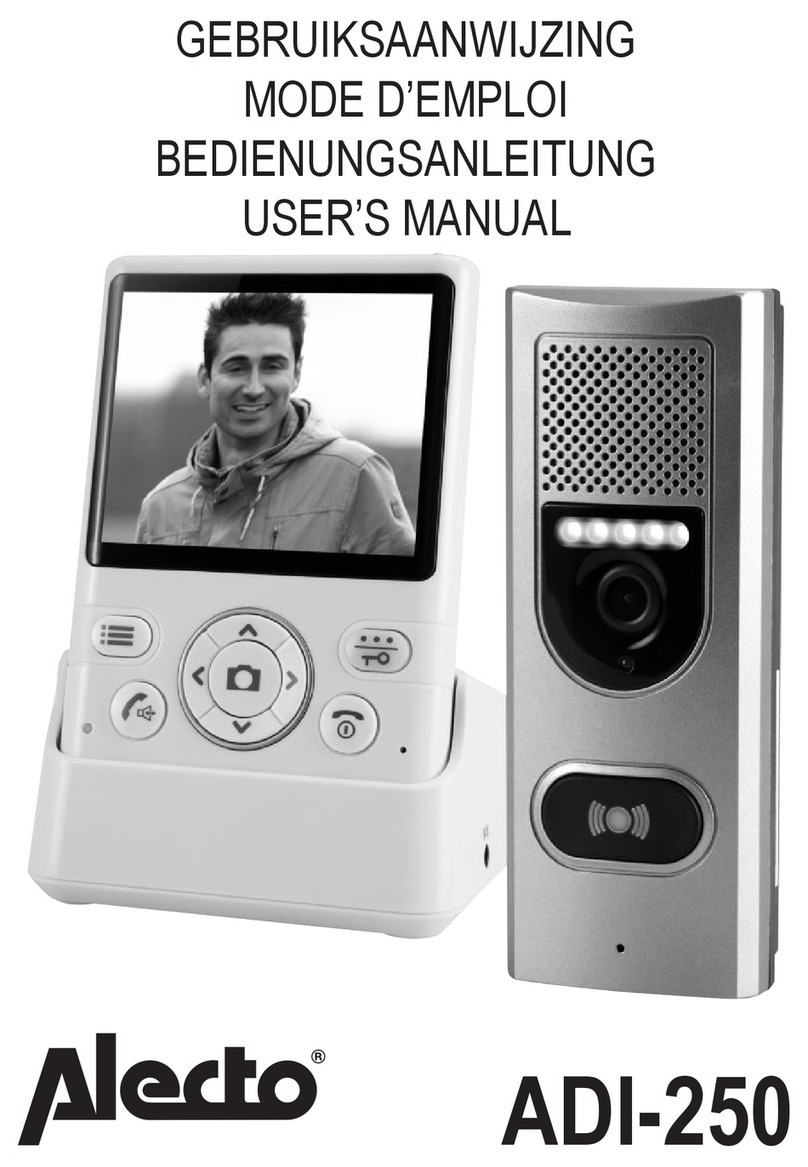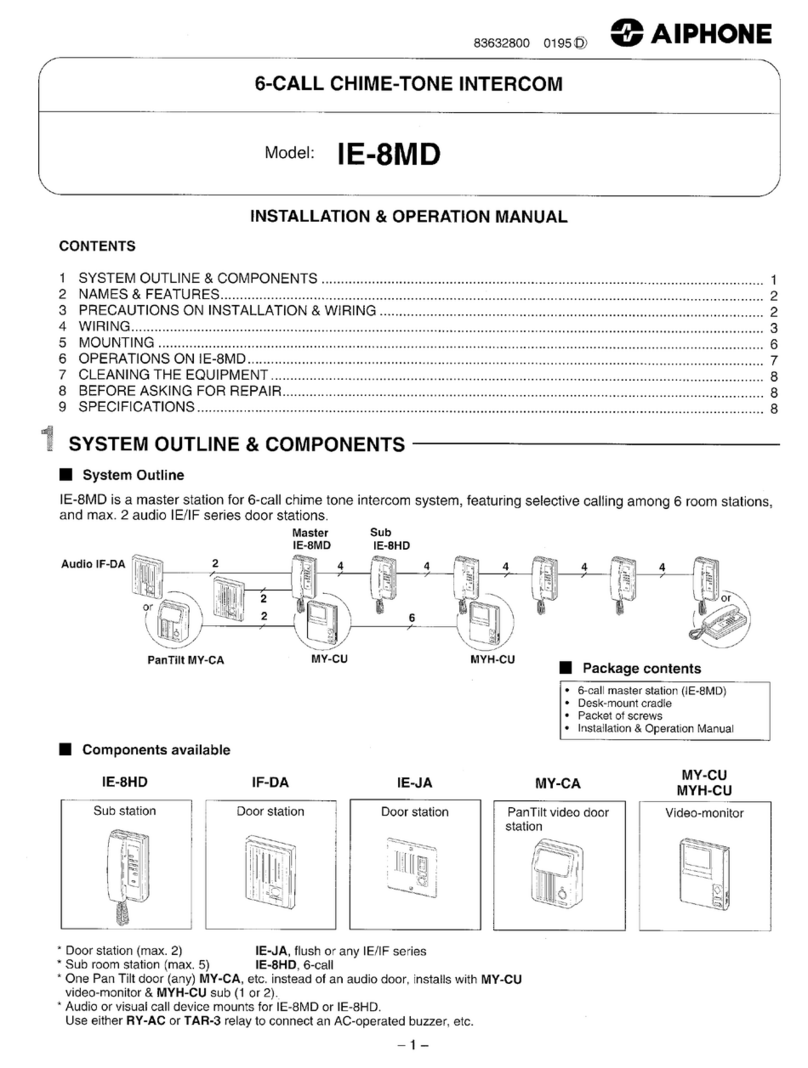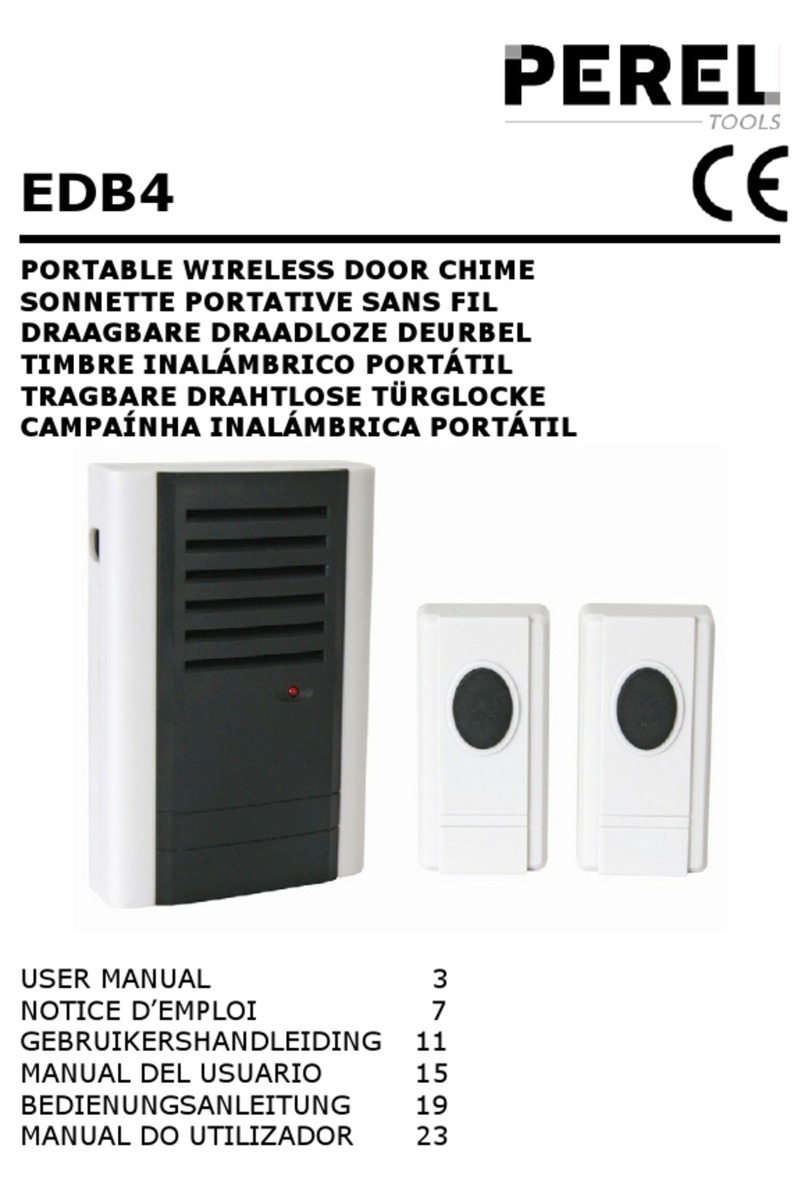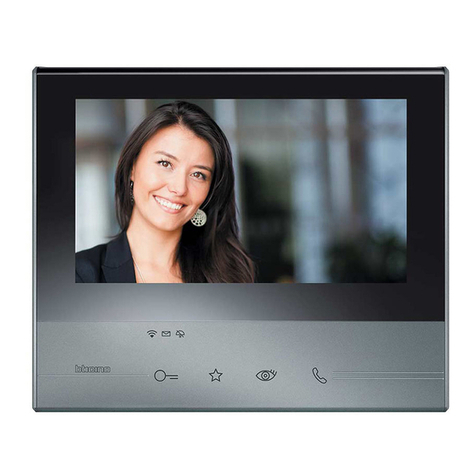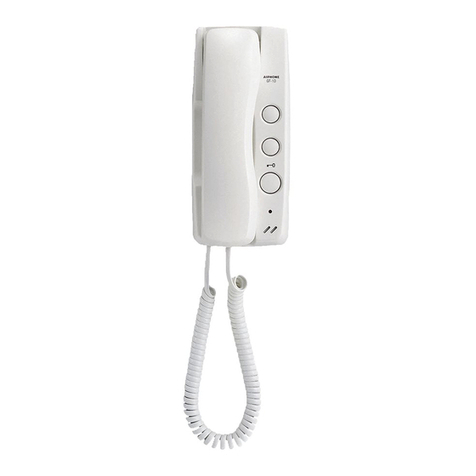
7
TAB: 40605
EN
b) Multifunction buttons - Depending on the context, the buttons serve to navigate between menus and select
menu options. For each button, there is an icon displayed at the bottom of the screen that illustrates its
function. In favourites screen, the central button gives access to the main screen, while with the other four
buttons, you can call/activate favourite contacts, if congured. In the main screen, the buttons allow you to:
return to the favourites screen, navigate to and select the section you wish to access (Settings, Contacts
List, ...), access the quick settings menu (user status setting, ringtone mute, video voicemail setting, cleaning
mode activation).
c) Talk/Listen Button - When an incoming call is received, pressing this button accepts the call. During
conversation, this button toggles between microphone on/off (mute function). In other cases, pressing the
button executes the congured function, e.g. self-start of a specic external unit.
d) Lock Button - During the call or conversation with the external unit, pressing the button activates the exter-
nal unit’s lock output, if previously congured. In other cases, pressing the button executes the congured
function, e.g. activating the lock output of a specic external unit.
e) Header – User name, date and time, master device (M) indication, status icons.
f) Settings – User-congurable parameters: user name, device ID name, interface language, date and time
(automatic or manual), display brightness and button backlighting, ringtones, volumes, call options and video
voicemail message. Some of the parameters can only be congured on the user's master video entryphone.
g) Call log – List of incoming and outgoing calls, including rejected and missed calls.
h) Contacts List – Contains all the contacts in the system divided by type:
• Home: user's video entryphones.
• Favourites: contacts selected by the user for fast access from the Favourites menu.
• Users: other system users.
• External Units: accessible external units in the system.
• CCTV: CCTV cameras congured to be accessible from the video entryphone.
• Receptions: reception switchboard stations that can be contacted from the video entryphone.
• Implementations: implementations installed in the system that the user can access; they permit imple-
menting functions such as, for instance, opening locks and switching on service lights.
i) Messages – List of text messages received.
l) Video Messages – List of audio and audio-video messages collected by the video voicemail service.
m) Status – Displays and enables setting the user status (i.e. all the video entryphones belonging to the same
user): Online or Do Not Disturb. In Do Not Disturb operating mode, all incoming calls are rejected; if the
video voicemail service is activated, the caller is prompted to leave an audio or audio/video message. In
Online status, incoming calls are signalled by a ringtone and visual feedback on the display.
